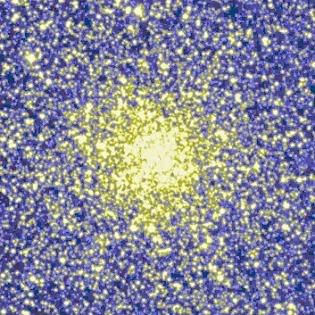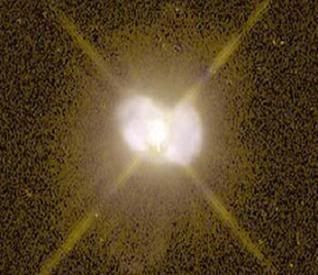Post by glactus on Feb 17, 2008 6:05:49 GMT

Sagitta is the third-smallest of all constellations (only Equuleus and Crux are smaller). At that time, however, it was even smaller, spanning only about 4 sq. deg. Being located not very far to the north of the equator, this constellation can be seen from everywhere on Earth except for within the Antarctic circle. Although ancient, Sagitta is insignificant, for it has no star larger than the 4th magnitude, the Five Stars, its noticeable feature. Sagitta was the common title with all the Romans who mentioned its stars.
Notable stars:
aSge
a Sge: also known as Sham, this yellow bright giant star of spectral class G1 II. Magnitude 4.7, lies at a distance of 610 light-years and together with â Sge (also 4.37m) forms either the feathers of the shaft or the two-pointed arrow once used in the Roman army.
y Sge
y Sge: this cool giant (M0 III, 3.47magnitude) represents with the stars a Sge and e Sge the shaft. It lies at a distance of merely 170 light-years.
e Sge
e Sge: G8 III has a magnitude of 5.66. It is a multiple star of components; component B is optical. Distance from Earth is 274 light years.
n Sge:
This star of spectral class K2 III with 5.1magnitude belongs to the Hyades moving group. Distance from Earth is 448 light years.
Notable objects:

NGC 6839
NGC 6839 at 100X it is easy to see, the eye goes right to the compact cluster. 150X is a good view, pretty bright, small, compressed, 11 stars counted of mags 11 and fainter. There is a 9th mag star that is 4 arcmin south. This is certainly not a grand cluster, but one can see why Wm Hershel included it in his listing. Magnitude is 12.0, and distance from Earth 18,000 light years.

SH-2-82
This combination HII region and reflection nebula, also called LBN 129 and DG 159, is ionised by the B0.5V star HD 231616. With the current distance estimate, it appears to be near the Vulpecula OB4 association. Magnitude is 10.8 and distance from Earth is 3,588 light years.

IC 4997
The challenge of this bright but starlike planetary is to see the disk with and without a nebula filter. Many emission-line fluxes have been detected in IC 4997. Changes are interpreted as due to recent temperature increases in the central stars of the planetary. These are known to belong to a small set which have shown variability in the past. Magnitude is 12.2 and distance from Earth is 2,400 light years.

Art planets
credits:
Sagitta map: Wikipedia
en.wikipedia.org/wiki/Sagitta
image: NGC 6839: astro.pef
www.astro.pef.zcu.cz/mlhoviny_hvezdokupy_galaxie/katalogy/ngc/ngc.php?c=6839&posun=OK
image: IC 4997:stsci.edu
oposite.stsci.edu/ftp/pubinfo/tiff/1997/pn/
image: SH-2-82: Courtesy of UK schmidt telescope.
galaxymap.org/cgi-bin/details.py?id=21629&name=S82&t=hii&s=4_p37.0xp35.5


